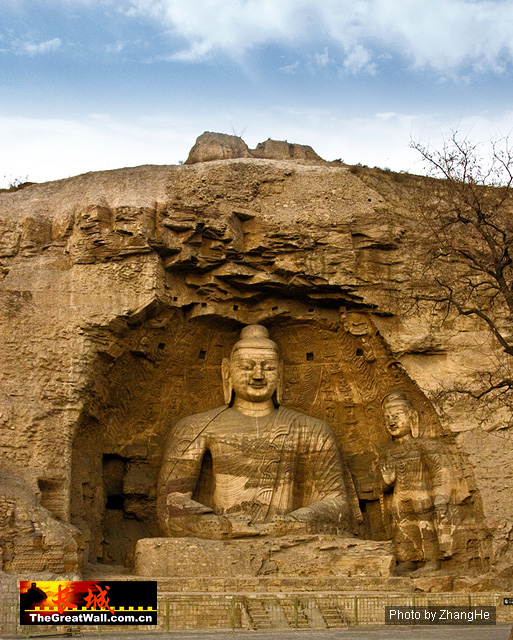
The Yungang caves are located in the valley of the Shi Li river at the base of the Wuzhou Shan mountains in the Chinese province of Shanxi. They are ancient Buddhist temples which provide an exceptional example of Chinese stone carving from the 5th and 6th centuries and one of the three most important ancient sculptural sites in China. (The others are Longmen and Mogao.) The site is composed of 252 grottoes with over 51,000 Buddha statues. Buddhism had been introduced to this area via the ancient North Silk Road.
The work on the first period of carving lasted until 465 AD, (these grottoes are now known as caves 16–20.) In a second construction phase from around 471 AD to 494 AD, the twin caves 5/6, 7/8, and 9/10, caves 11, 12, and most likely, 13, were all built under the supervision of the imperial court. The imperial patronage ended in 494 AD with the move of the Wei court to the new capital of Luoyang. All other caves emerged under private patronage in a third construction period, lasting until 525, when the construction ended due to uprisings in the area.
In 2001, the Yungang Grottoes were given UNESCO World Heritage Site status.
There are two Fortress in Yungang, which all were built during the Ming Dynasty (1368-1644). The old Yungang Fortress was built at 1558, and the new Yungang Fortress built at 1574.
(Photograph : Zhang He) |

